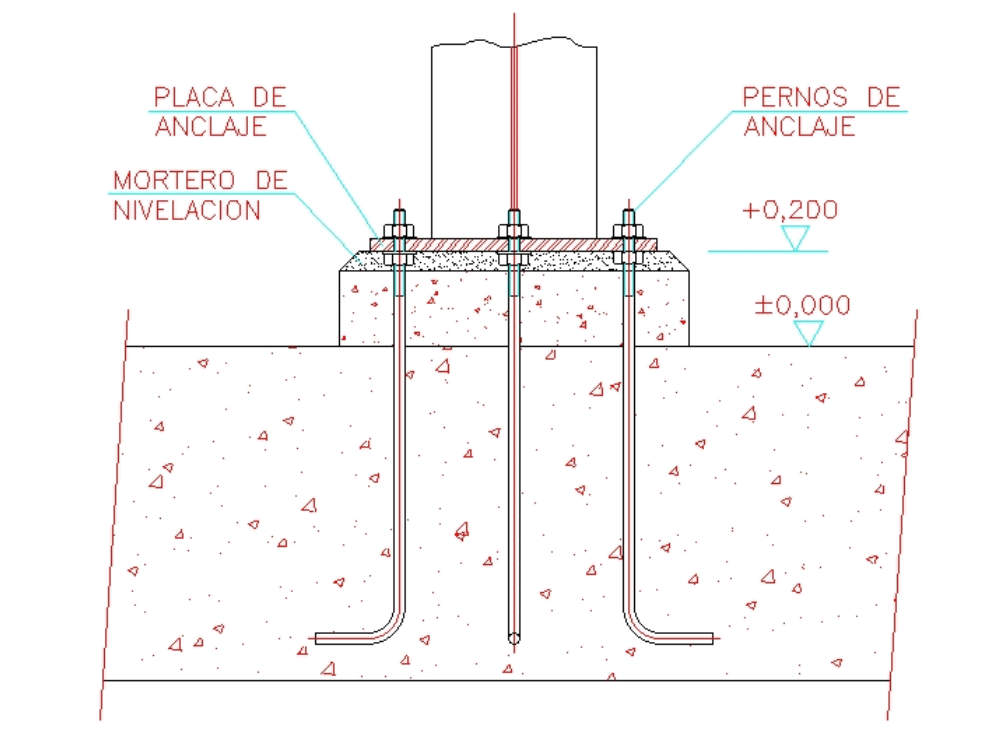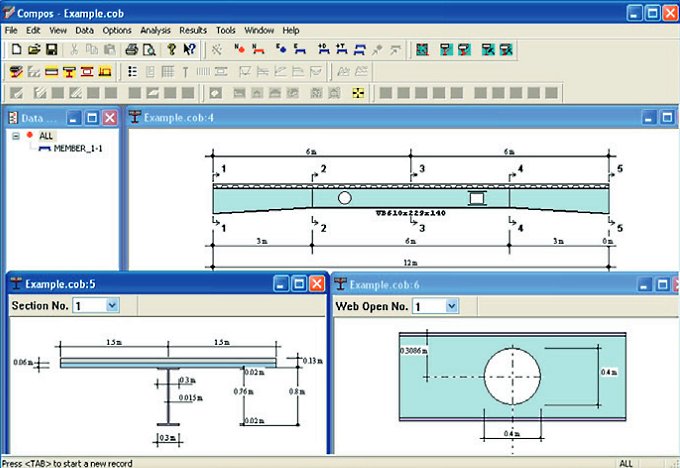- Castellated Beam Design Software Reviews
- Castellated Beam Design Software Download
- Castellated Beam
- Castellated Beam Design Software Pdf
Keywords: Castellated beam, sinusoidal openings, finite element analysis, steel beam. Castellated name come from the Latin word whose meaning is to structurally fortify. Before castellated beams, I-beams were used in construction because they are strong and solid way of supporting houses and other industrial structures. Castellated sections are formed by welding longitudinally-cut webs of rolled sections (rolled I-sections available in section databases). There are 2 castellated section types available: those with hexagonal or with round openings. Castellated members can be designed only in accordance with the Polish steel code. The following parameters specify a castellated section: Label - Assigns a label. Dec 22, 2014 The Computer-Aided Design ('CAD') files and all associated content posted to this website are created, uploaded, managed and owned by third party users. Each CAD and any associated text, image or data is in no way sponsored by or affiliated with any company, organization or real-world item, product, or good it may purport to portray. Resistance of the castellated beam. However, previous studies confirm that the method of analysis and design for the solid beam, may not be suitable for the castellated beam. Design guidance on the strength and stiffness for castellated beams is available in most countries, but.
The CivilWeb Castellated Beam Design Spreadsheet Suite is an easy to use suite of design tools for the design of castellated beams. The suite includes separate spreadsheets for the design of standard sized castellated beam sections in accordance with BS EN 1992. The suite also includes separate spreadsheets for the design of non-standard sized castellated beams in accordance with BS EN 1992 or AISC standards. Each spreadsheet includes a unique tool showing the user exactly which castellated beam sections are both valid and economical, saving hours of iterative calculations to determine the most optimal castellated beam section for any design conditions.
Together this suite of spreadsheets can be used to design any standard or non-standard castellated beam sections to Eurocode or AISC standards. The CivilWeb Castellated Beam Design Spreadsheet Suite can be purchased for only £19.99.
Alternatively the CivilWeb Steel Beam Design Spreadsheet Suite includes castellated beam sections along with all other I and Tee shaped beam sections. This powerful suite of spreadsheets can be used to design any steel beam and is available to purchase for only £29.99.
Or why not buy our best value bundle? Our Full Steel Design Spreadsheet Suite can be purchased at the bottom of this page for only £49.99. This suite includes all of our steel design spreadsheets and represents an incredible saving of 66%. This suite can also be purchased at the bottom of this page.
Castellated Beam Design
Castellated beams consist of standard sized I shaped beams which are then cut in a zig-zag pattern and rearranged to form a deeper beam with diamond or hexagon shaped holes through the web. In some cases such as where a beam is required to resist large bending moments, this arrangement can provide a more economical beam by creating a deeper beam and removing steel from the web where it is not required.
Castellated beams have been in use for more than 50 years and continue to be used regularly today. Castellated beams are very well suited to beams subject to high bending moments. The process of cutting the I shaped beam apart and welding back together to create a deeper beam increases the bending resistance of the section without adding any additional steel material or any corresponding weight. This allows the castellated beam to achieve a very high strength to weight ratio at an economical cost.

The holes in castellated beams also make it easy to install electrical, water and other services which are able to pass through the beam without installing new holes and weakening the section.
CivilWeb Castellated Beam Design Spreadsheet
The CivilWeb Castellated Beam Design Spreadsheet includes all the tools required for the design of standard castellated beam sections made from I beams or RSJ beams. The suite includes the following spreadsheets;
- Bending, Shear and Bearing on Web Analysis in accordance with Eurocode BS EN 1992
- Bending, Shear and Lateral Torsional Buckling Analysis in accordance with Eurocode BS EN 1992
- Biaxial Bending and Shear Analysis in accordance with Eurocode BS EN 1992
- Biaxial Bending, Shear and Bearing on Web Analysis in accordance with Eurocode BS EN 1992
- Biaxial Bending, Shear and Lateral Torsional Buckling Analysis in accordance with Eurocode BS EN 1992
All the Castellated Beam Design Spreadsheets include a unique section picker tool which shows the designer exactly which castellated beam sections are suitable for the design conditions. The tool also then sorts the sections by weight, allowing the designer to see at a glance exactly which section is most economical for each steel grade. This will save the designer many hours of repeating detailed calculations for different sections to see which are best suited and most economical.
CivilWeb Castellated Beam Design Spreadsheet Suite
The CivilWeb Castellated Beam Design Spreadsheet Suite is an easy to use collection of spreadsheets for the design of standard castellated beam sections to BS EN 1992. The spreadsheet suite includes 5 different types of analysis for castellated beams made from UC, UB and from RSJ sections. The spreadsheet includes all castellated sections included in BS4.
Buy the CivilWeb Castellated Beam Design Spreadsheet Suite now for only £19.99.
Or why not buy our best value bundle, the full CivilWeb Steel Design Suite which includes all of our steel design spreadsheets for only £49.99, a saving of 66%.
Download Free Trial Version
To try out the free trial version of this software, please enter your email address below to sign up to our newsletter and we will send your free version now.
What is a Castellated Beam?
Castellated Beam Design Software Reviews
When it comes to engineering and architecture, there are plenty of things that seem constantly in flux. Every year brings great new ideas and innovations to help today’s thought leaders create the buildings of tomorrow.
However, there is comfort in the idea that certain architectural mainstays are consistent from year to year. For instance, castellated and cellular beams have been in mainstream architectural use for the better part of a century.
And both c-beams, cellular and castellated, show no signs of slowing down anytime soon, as they are still prominently featured in a wide array of modern architecture. We’ve prepared a guide to help you understand the origins, design, and application of c-beams!
General Design
A castellated beam is a beam that has a regular and repeating pattern of hexagonal holes. It is created by cutting the pattern lengthwise across two different halves, offsetting, and then welding them together to create a single expanded beam.

These beams have been used in various construction projects since the second half of the twentieth century. There has also been something of a c-beam renaissance in recent years as engineers have discovered the many versatile uses of these beams in the construction of various construction projects.
C-beams also encompass cellular beams, though the cellular beam fabrication process includes a double-pass process. While cellular beams are more modern and also have many uses, the c-beam is still used for many kinds of construction projects around the world.
History
Before castellated beams, there were i-beams. These were developed way back in 1849 and provided a strong and sturdy way of supporting houses and other structures. Castellated beams were developed as structural channels to increase the beam’s depth and strength without adding additional material and weight.
Since the 1950s, castellated beams have been the ideal construction solution. After World War II, engineers faced steel shortages, and they discovered that these beams were cheap to produce and offered a fantastic strength to weight ratio.
In the 1990s, cellular beams were invented. They eventually replaced many uses for castellated beams, though they are still used for over a fifth of the long-span construction projects in the UK and beyond!
Castellated Beam Design Software Download
Design Guide 31
One of the reasons that both castellated and cellular beams are prominent once again is Design Guide 31. This is a publication by the American Institute of Steel Construction that provides guidance on best practices in utilizing c-beams for various construction projects. One of these design guides focused on the different uses of castellated and cellular beams.
This design guide wasn’t just created to provide ideas, though. It also provides in-depth information on how architects can fully comply with the 2016 Specification for Structural Steel Building. Before this, architects and engineers alike struggled with how to balance creative uses of these beams with the stringent compliance standards.
Castellated vs. Cellular Beams
Castellated Beam
While there are many design similarities, there are also some striking differences between castellated and cellular beams. And each kind of beam provides its own unique sets of advantages dependent on your particular construction needs.
The castellated beams are filled with pseudo-hexagonal holes while the cellular beams focus on circular holes. For castellated beams, the holes have size limitations, which means beams may require modification to accommodate larger services. The different hole sizes and fabrication process for cellular beams provide some advantages over the earlier processes.

Cellular beams allow you to change spacing for each beam, allowing you to reduce both the overall number of holes and the amount of infilling you must do. They are also flexible enough to allow various diameters of cell without raising your prices or even changing up your fabrication process.
Cellular beams also allow you to create a range of depths and customize each beam however you see fit, making them ideal for custom projects and unconventional designs.
However, castellated beams still have their own advantages that make many architects and engineers prefer them. For instance, even after all these years, castellated beams offer a desirable weight to strength ratio at a very affordable cost. They have also been the standard for so long that they are easy for any installers and electricians to work with.
C-beams have also become a major part of the architectural aesthetic in America and throughout the world. Using them in construction virtually guarantees that your final building will look classy and elegant to everyone who sees it!
Practical Applications
These c-beams have a number of modern applications. Far from being yesterday’s technology, they still provide the backbone for much of the major architecture you will see in any given city.
One example is parking garages. Major metropolitan areas are facing a grim reality: they have more people coming in every year, but there is not additional space for the growing population. Structures like parking garages have become more important than ever to accommodate drivers within major cities, and c-beams provide significant savings vs. material such as concrete.
Another modern phenomenon is that of the business startup. There are new ideas and new entrepreneurs popping up every day, and this necessitates building more and open air office buildings. C-beams are great for this because it allows architects to get the level of strength they need without having to add materials such as steel. And the flexibility of the c-beams means that you can create as large or small a space as you need with strong, flexible beams that are cheap to buy and simple to use.
Conclusion
As we said, c-beams have been a major component in architectural design since the second half of the twentieth century, and we’re confident they will still be an architectural foundation throughout the entirety of the twenty-first century.
Castellated Beam Design Software Pdf
Ultimately, c-beams are exactly what they say on the package. They are light, strong, and cheap, all while providing the simplicity, flexibility, and affordability that engineers demand. When you’ve got big dreams for your future buildings, you’ll definitely want to hold them up with castellated or cellular beams!